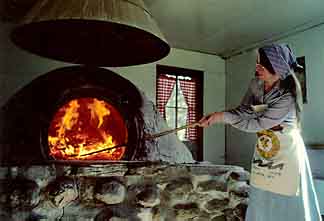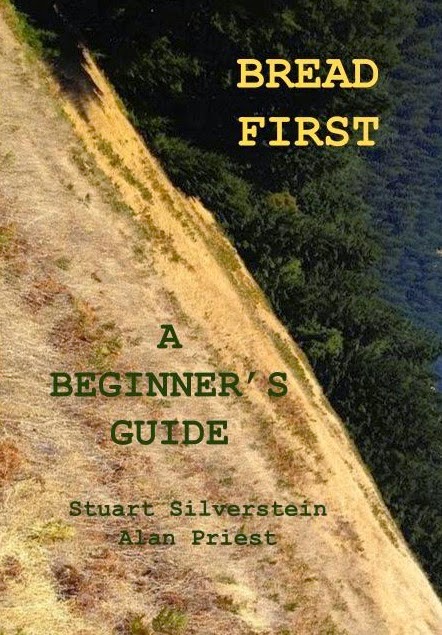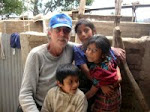As I've said before, Jim Lahey's formula for no-knead bread has changed the bread baking landscape for the home baker.
For me, and for a lot of other bakers, the most difficult procedure is getting the dough into the hot Dutch oven without suffering a third degree burn.
I've been experimenting with a different method of getting the dough into the Dutch oven, and it's been working fine.
To make a 1 kilo (a magic weight for me) loaf:
I'm assuming everyone knows the basic method of preparing the dough (I've gone over it previously on this blog) so I won't repeat it again.
On day #2 loosen the dough from around the edge of the bowl, and as you do this, add flour around the gap you're temporarily creating. This makes it easier to release the dough into the oven.
Preheat the oven with the Dutch oven inside at 500ºF. for 30 minutes.
Remove Dutch oven and add cornmeal to bottom.
Using your dough scraper to assist, dump dough into Dutch oven to bake.
(The dough never touches the counter, nor does it go onto a cloth or into a basket)
Bake 30 minutes with cover on at 500ºF.
Bake 15 minutes with cover on at 450ºF.
Bake 15 minutes with cover off at 450ºF.
If your loaves are burning on the bottom or become rock hard on the bottom, then you need some insulation. Add extra cornmeal or, as I do, put an insulated baking sheet on a low rack to deflect heat.
For me, and for a lot of other bakers, the most difficult procedure is getting the dough into the hot Dutch oven without suffering a third degree burn.
I've been experimenting with a different method of getting the dough into the Dutch oven, and it's been working fine.
To make a 1 kilo (a magic weight for me) loaf:
5 cups unbleached white flour
2 teaspoons salt
3/8 teaspoon active dry yeast
2 1/2 cups water
Risen dough
Creating gap for extra flour
Remove Dutch oven and add cornmeal to bottom.
Using your dough scraper to assist, dump dough into Dutch oven to bake.
Turning dough into Dutch oven
Dough in Dutch oven
Bake 30 minutes with cover on at 500ºF.
Bake 15 minutes with cover on at 450ºF.
Bake 15 minutes with cover off at 450ºF.
Baked loaf
If your loaves are burning on the bottom or become rock hard on the bottom, then you need some insulation. Add extra cornmeal or, as I do, put an insulated baking sheet on a low rack to deflect heat.









